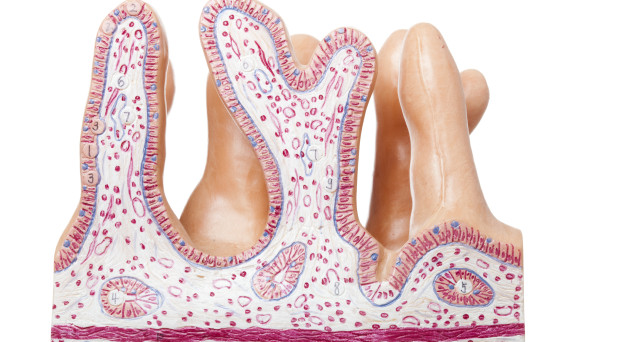
Gastroenterology is a vast discipline, and from 16 – 19 May, around 15,000 delegates from across the globe met at DDW 2015 to discuss the latest research in the field.
Inflammatory Bowel Disease (IBD) was just one of the diseases discussed at large during the conference. This is a group of idiopathic chronic inflammatory intestinal conditions, and its incidence is increasing worldwide with no cure currently available.
The first session on 16 May addressed whether living in a rural or urban environment could affect the risk of developing IBD. Eric Benchimol presented the results of a Population-based and Birth Cohort study from the Canadian Gastro-Intestinal Epidemiology Consortium (CanGIEC).
IBD incidence in Canada is one of the highest in the world, but the risk is not uniform among its provinces. Spending childhood in a rural environment appears to protect against adult IBD, and the effect is stronger in children than adults. Importantly, socioeconomic status is not linked to the incidence of IBD, but given the heterogeneity of the data and the conditions, this will require further studies.
You and your microbiome
The human microbiome was one of the main themes at DDW 2015. In a talk about gut microbiome markers and clinical response to diet, Bruno Chumpitazi focused on the efficacy of a low fermentable saccharides and polyoils diet (FODMAP) to decrease gastrointestinal disease symptom frequency and severity.
Such a diet is effective in many children and adults, but its effectiveness is still under debate. Chumpitazi highlighted that a number of specific gut biomarkers increased, such as Bacteroides, Ruminococcaceae and Faecalibacterium prausnitzii, which can be associated with the clinical response to low FODMAP diet in 33 children with IBS.
Alain Benitez described how the microbiome is also distinct in children with and without eosinophilic esophagitis, an allergic disorder featured by inflammation of the esophagus. With the aid of gene sequencing, he concluded that introducing allergenic foods caused the increase of specific bacterial species like firmicutes, which reach their highest diversity during active allergic inflammation.
The principal aim of our studies was to provide rationale basis to a possible specific therapeutic intervention in restoring a balanced gut microflora in autism spectrum disorder patients
Anna Sapone
Finally, Anna Sapone gave a talk on the microbiome signature of autistic children, highlighting that an individual’s microbiome is not only dynamic, but can be specific to certain conditions. In their unpublished study on 47 autistic children, they found a specific microbiome signature exhibiting lower diversity and distinct representation of specific phyla. Dr Sapone explained that “The principal aim of our studies was to provide rationale basis to a possible specific therapeutic intervention in restoring a balanced gut microflora in autism spectrum disorder patients.”
Better screening needed for colorectal cancer
Colorectal cancer ranks among the most common worldwide, and tens of thousands of people get diagnosed every year. At present, the five year survival rate in Europe is under 60%, and management is often invasive and painful. Early detection is extremely important, as Marjory Koller described that 40% of patients will develop metastases, and chance of survival is greatly increased via earlier intervention.
Colorectal cancer is mainly screened through fecal occult blood tests, sigmoidoscopy or colonoscopy. Other methods are available, but all techniques have limitations. Surgeons rely on palpation and visual inspection to verify the extent of the cancer spread, and this can lead to small lesions being missed, which is fundamental for early diagnosis. Unpublished results on intraoperative near-infrared fluorescence during intraperitoneal chemotherapy suggest a higher rate of cancer tissue detection is possible and safe.
How should hepatitis C treatment be prioritized?
Today, several million people worldwide are infected with the hepatitis C virus (HCV), which is compounded by one quarter of US hepatitis patients being HIV co-infected. Nancy Reau explained that HCV therapy should be prioritized according to cohort, especially the ones who have greater impact on further HCV transmission.
The current range of therapeutic regimens is not ideal for all patients and management is still challenging, as viral genotype and patient characteristics need to be taken into account. Some of the treatments available today are FDA approved but according to Reau, some are no longer recommended. Clinical trials are underway, and we look forward to seeing their results for potential new treatments.
Celiac disease is seldom alone
Celiac disease (CD) and its related pathologies are rising worldwide, but the mechanisms and prevalence estimates are still uncertain. For example, lymphocytic gastritis (LG) has an uncommon histologic entity with different symptoms and endoscopic appearances. Benjamin Lebwohl argued that there’s a probable association between LG and CD.
To test this, Lebwohl and colleagues measured the prevalence of LG in people with and without CD, by analyzing concurrent gastric and duodenal biopsy specimens, concluding that LG is associated with CD. These results add to the knowledge of celiac disease, and it is vital to assess the clinical significance of this association. Celiac disease diagnostic techniques are still very much under debate, and the focus is now on developing less invasive methods.
Gastrointestinal diseases are extremely varied and complex, and so it’s great that meetings like DDW exist to allow researchers to share their latest findings and hypotheses, encouraging constant innovation. We really look forward to seeing the results of so much hard work translated into clinical practice.

BMC Medicine: passionate about quality, transparency and clinical impact
2014 median turnover times: initial decision three days; decision after peer review 41 days
Comments